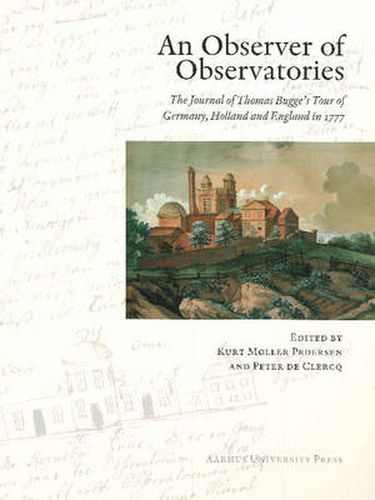Readings Newsletter
Become a Readings Member to make your shopping experience even easier.
Sign in or sign up for free!
You’re not far away from qualifying for FREE standard shipping within Australia
You’ve qualified for FREE standard shipping within Australia
The cart is loading…






In 1777, the Danish astronomer Thomas Bugge (1740-1815) was appointed professor of mathematics and astronomy at the University of Copenhagen. Keen to modernise the existing observatory on top of the Round Tower, he travelled through Germany to Holland and England to learn more about the state of astronomy and instrument-making in these countries. During his tour he kept a journal in which he noted what he saw, whom he met and which books and instruments he bought. He also included dozens of sketches and drawings, which greatly add to the historical value of his manuscript. The document lay undiscovered in the Royal Library at Copenhagen until 1969, when Kurt Moller Pedersen found it and prepared a provisional transcript. Forty years later, this journal is now made available and Bugge’s drawings are complemented by portraits of academics and instrument-makers and by photographs of buildings and instruments, many of which survive in museums today. This richly illustrated and fully annotated edition of Bugge’s travel journal will be of value for anyone who is interested in the history of science and technology in the 18th century.
$9.00 standard shipping within Australia
FREE standard shipping within Australia for orders over $100.00
Express & International shipping calculated at checkout
In 1777, the Danish astronomer Thomas Bugge (1740-1815) was appointed professor of mathematics and astronomy at the University of Copenhagen. Keen to modernise the existing observatory on top of the Round Tower, he travelled through Germany to Holland and England to learn more about the state of astronomy and instrument-making in these countries. During his tour he kept a journal in which he noted what he saw, whom he met and which books and instruments he bought. He also included dozens of sketches and drawings, which greatly add to the historical value of his manuscript. The document lay undiscovered in the Royal Library at Copenhagen until 1969, when Kurt Moller Pedersen found it and prepared a provisional transcript. Forty years later, this journal is now made available and Bugge’s drawings are complemented by portraits of academics and instrument-makers and by photographs of buildings and instruments, many of which survive in museums today. This richly illustrated and fully annotated edition of Bugge’s travel journal will be of value for anyone who is interested in the history of science and technology in the 18th century.